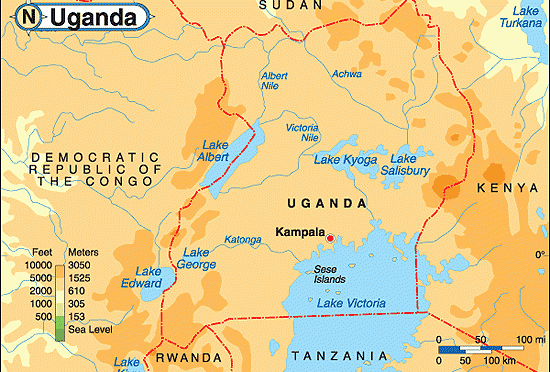Despite the immense opportunities associated with solar energy, its adoption in Uganda has been relatively slow.
Even as the ministry of Energy and Mineral Development prepares to roll out Phase II of the Rural Electrification Programme, which is financed by the World Bank, it is becoming increasingly clear that hydropower is not a viable option.
Government needs to look into other sources of energy, especially solar energy. This is more urgent, considering Uganda’s resolve to achieve middle-income status.
Uganda’s current energy sources are hydroelectric power, biomass co-generated power from industries, and imported petroleum. The rural electrification component has also implemented several projects countrywide in the areas of solar – PV, hydropower and grid extension.
Most of these projects are geared towards providing electricity to individual households, small and medium enterprises, through the “Access to Solar” project.
However, Uganda’s energy needs are bigger than what is currently generated, although the consumption per capita is low. The country runs a massive energy deficit which costs hundreds of thousands of dollars every day. Although power cuts have reduced, thanks to the opening of Bujagali power project in 2012, the country still lags behind. It will continue to do so as more Ugandans enter the job market and form new families.
Countries such as Kenya have adopted a comprehensive solar system and their approach is a success story from which Uganda can learn. Kenya has a number of off-grid solar systems that have helped supply power to rural and peri-urban areas. For example, the 50MW solar power plant in Garissa, Northern Kenya, and the Lake Turkana 250MW solar project.
Rural Uganda remains largely underserved by electricity. However, a ray of light is steadily shining through the gloom of nocturnal darkness with the rollout of the Energy for Rural Transformation (ERT) project. In tandem with the government’s Poverty Reduction Strategy Paper (PRSP), which was discussed by the World Bank, the first energy for rural transformation project, that, among others, aimed at directly increasing the quality of life of the poor, was recently launched. The PRSP targeted delivery of public services in the sectors of education, health, and water and sanitation.
The main objective of the long-term programme was to develop Uganda’s rural energy and information and communications technology (ICT) sectors, in order to contribute to rural transformation. There was also focus on a functioning conducive environment and related local capacity for renewable energy supply over the long term.
According to the World Bank photo book, celebrating 50 years of partnership in Uganda, in both Omodoi and Toroma communities, public-private partnerships exist. At community access points, located at regular intervals, the community pays Shs 75 to the sub-county for every 20-litre jerrycan of water, money which helps maintain the system.
Toroma is a beneficiary of an IDA World Bank loan of $45m and a global environment facility grant of $9m for the Electricity for Rural Transformation II project. The ministry of Water and Environment is overseeing 20 solar water-pumping systems. Solar energy, therefore, is one of the most-promising renewable and environmentally-friendly energy sources.
Government needs to diversify the energy sector through increased investment into other renewable energy sources, chief of which should be solar energy. Only then shall we have hope of realising the renewable energy policy goal of increasing use of modern renewable energy from four per cent to 61 per cent by 2017.
Uganda has an estimated hydropower potential of over 4,500MW, biomass co-generation potential of 1,650MW, geothermal energy potential of 450MW, and peat (fossil fuels) power potential of 800MW. Exploitation of these would massively reduce the deficit.
However, even when fully utilised at 100 per cent efficiency, these traditional energy reserves would not cover the country’s power needs beyond 2020. A faster electrification and access rate can only be obtained if renewable energy resources are equally harnessed. The combined efforts of grid densification, implementing small hydropower/solar-PV-based plants and promotion of household/institutional/SME solar-PV systems are key drivers for a vibrant rural electrification initiative.
Uganda’s best hope lies in novel power generation technologies – concentrated solar thermal power, together with bio-mass gasification and bio-gasification.
However crucial the environment and natural resource (ENR) management is to Uganda’s development, the sector does not receive adequate attention during budget allocation.
Government should consider increasing funding to the ENR sector, especially at the local government levels, and also encourage a programme of ’35 million Ugandans 35 million trees’ planted annually from financial year 2014/15, for the next five years. Districts need to be supported to effectively implement their disaster-reduction and response plans through funding, and capacity-building.
By Grace Kobusingye
The author works with Uganda Debt Network.


